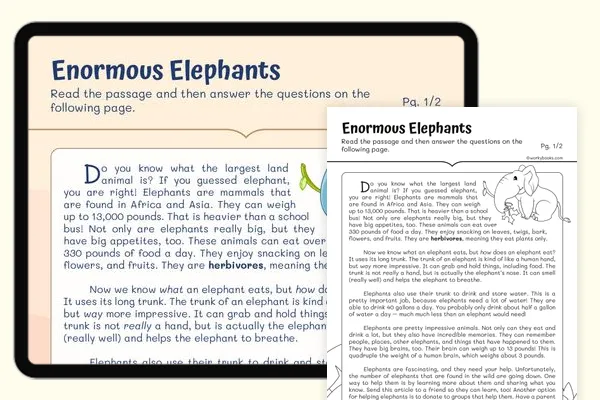How Does Snow Form? — Passage
Snow is a form of frozen precipitation that falls from clouds when the air is cold enough. It may look soft and fluffy, but snow starts high up in the sky through a process that involves temperature, moisture, and tiny particles in the air.
Snow begins to form inside cold clouds when water vapor in the air changes directly into ice. This process is called deposition. Instead of turning into liquid water first, the vapor skips that step and turns into tiny ice crystals. These crystals form around dust or pollen particles, which act like seeds for the snowflakes.
As more water vapor sticks to the crystals, they grow into snowflakes. Snowflakes have six sides and form different shapes depending on the temperature and humidity in the cloud. No two snowflakes are exactly alike because of the millions of ways the ice can grow and branch out.
When the snowflakes get heavy enough, they fall to the ground. But for snow to reach the surface without melting, the air all the way down must be at or below 0°C (32°F). If the air is warmer near the ground, the snow may melt and turn into rain or sleet before it hits the earth.
Snow plays an important role in the water cycle. When it melts in the spring, it feeds rivers, lakes, and soil. Snow also helps reflect sunlight, keeping Earth cool.
Fun Fact: The largest snowflake ever recorded was 15 inches wide and 8 inches thick—it fell in Montana in 1887!
What is snow?
Melted ice from cloudsFrozen rainFrozen water vapor that turns into ice crystalsHail that gets softWhere does snow begin to form?
On the groundInside cold cloudsIn warm airIn oceansWhat is deposition?
Water freezing on the groundWater vapor turning into rainWater vapor turning directly into iceIce melting into waterWhat do snowflakes form around?
SunlightAir pressureDust or pollen particlesDrops of oilWhat happens if the air near the ground is too warm?
It snows harderSnowflakes fall fasterSnow melts into rain or sleetClouds disappearWhy are no two snowflakes exactly alike?
They all melt quicklyThey grow in different shapes depending on conditionsThey’re made of different materialsThey spin too fastWhat is the main idea of the passage?
Snow is only found in mountainsSnow helps keep Earth warmSnow forms in cold clouds when water vapor becomes iceSnow comes from lakes and riversHow does snow help the water cycle?
It turns into icebergsIt blocks sunlightIt melts and adds water to rivers and lakesIt evaporates before hitting the ground



















